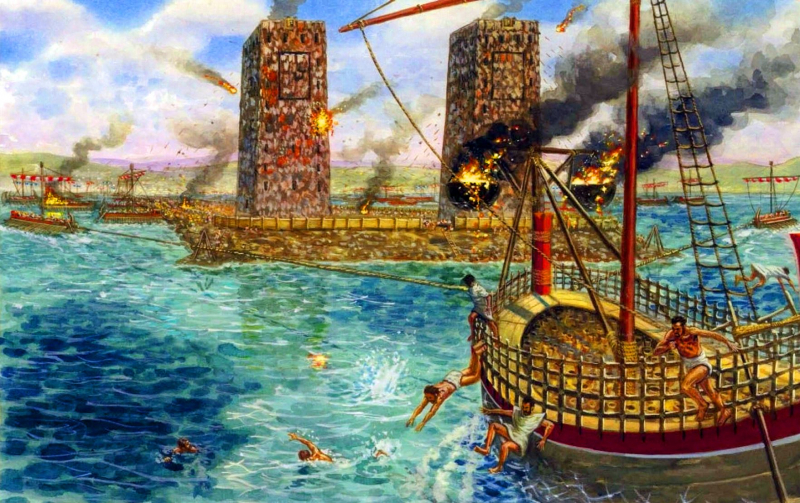Siege Of Tyre And Gaza (332 – 331 BC)
Alexander marched his army towards Phoenicia, where he received the capitulation of Byblus and Sidon, after defeating Darius III at the battle of Issus in November 333 BCE. While Alexander was on the march, Tyrian envoys spoke with him and declared their intention to carry out his desires.
Alexander had understood that he needed to secure his supply network before going up against his foes. The keys were the coastal territories of Palestine, Egypt, and Phoenicia. Tyre, Phoenicia's largest city-state, rejected Alexander's peace proposals, claiming neutrality in the conflict. Alexander, on the other hand, was adamant in his refusal to yield, and in January 332 BC, he began a nearly eight-month siege of Tyre. Until the fort's destruction, an uncompromising Alexander built bridges to the island city, used siege machines, and battled off the Tyrian navy and army.
Alexander marched south through Jerusalem after the destruction of Tyre to lay siege to Gaza, which was a fortified hill. Batis, the commander of Gaza, had refused to submit to Alexander. Gaza was eventually seized after three failed assaults. After the fall of Gaza, Alexander moved to Egypt, where he was acclaimed as a liberator. In 331 BC, Alexander established the city of Alexandria, which would later become the epicenter of Hellenistic culture and commerce.











